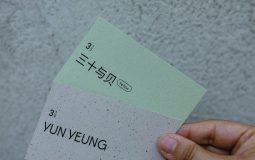Translation is like juggling words. One wrong move, and everything falls apart. Whether you’re translating a website, a book, or a product label, mistakes can be embarrassing — or even dangerous!
Let’s explore some common translation errors, how to spot them, and most importantly, how to fix them. Grab your favorite snack and let’s dive in!
1. Word-for-Word Translation
Languages don’t work like puzzles. You can’t always swap one word for another. Here’s why:
- Different word order: English says “red car,” but Spanish flips it: “coche rojo.”
- Idioms sound silly when translated literally: “It’s raining cats and dogs” doesn’t mean animals are falling from the sky!
- Puns and jokes usually don’t survive translation intact.
Fix: Always translate meaning, not just words. Think about what the sentence is trying to say, then say it naturally in the target language.
2. False Friends
False friends are sneaky words. They look like words in your language but mean something else entirely.
For example: In Spanish, “embarazada” doesn’t mean embarrassed — it means pregnant! Oops.
Fix: Don’t trust lookalikes. When in doubt, double-check with a trusted dictionary or native speaker.

3. Cultural Confusion
Some phrases just don’t travel well. A joke that’s hilarious in New York might fall flat in Tokyo.
Colors, symbols, or gestures might also send the wrong message. Even holidays and food can mean different things in different cultures.
Fix: Learn about the culture. Use local expressions that your audience will understand. Or when in doubt, go with neutral terms!
4. Grammar Gremlins
Every language has its quirks. Forgetting them can lead to grammar goofs that look unprofessional.
- Wrong verb tenses
- Gender mismatches
- Missing articles like “a” or “the”
Fix: Always proofread. Better yet, have a native speaker check your work. Tools like grammar checkers can help, but they’re not perfect.
5. Lost Context
Sometimes, a translation is technically correct but totally wrong in context.
Imagine reading a product description that calls your favorite snack “inedible” when they meant “non-toxic.” Oops again!

Fix: Always look at the big picture. Ask, “Does this make sense?” Read it out loud, or test it with real users.
6. Machine Translation Overload
Online translators can be helpful. But if you rely on them too much, you’ll end up with robotic, awkward text. Machines don’t always get humor, tone, or slang.
For example: Try translating “break a leg” and see what happens. You might end up sounding like a medical drama.
Fix: Use machines for a first draft only. Then edit — or better yet, hire a real translator.
How to Catch Mistakes
Spotting errors takes a sharp eye. Here’s how to catch them before they go public:
- Use checklists. Look for common problem areas like idioms, grammar, and tone.
- Read out loud. Awkward phrases usually sound wrong to the ear.
- Ask for feedback. Get a native speaker or editor to review your translation.
- Use translation tools. CAT tools and style guides can help you stay consistent.
Final Fun Fact!
Did you know Pepsi once translated their slogan “Come alive with the Pepsi Generation” into Chinese — and it came out as “Pepsi brings your ancestors back from the grave”? Yikes!
That’s a legendary reminder: Translations matter!
So next time you’re translating something, remember—take your time, double-check, and don’t trust machines too much. Because one little error can turn your words into a worldwide joke.
Happy translating!







